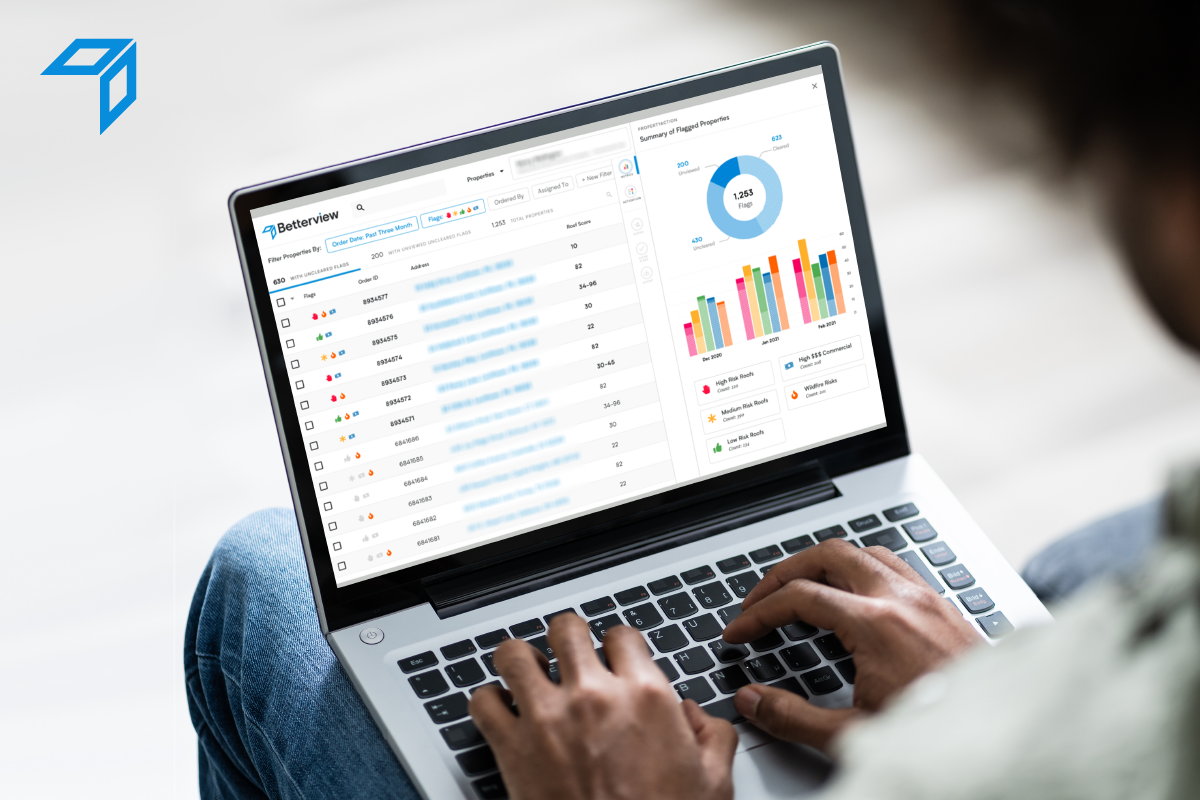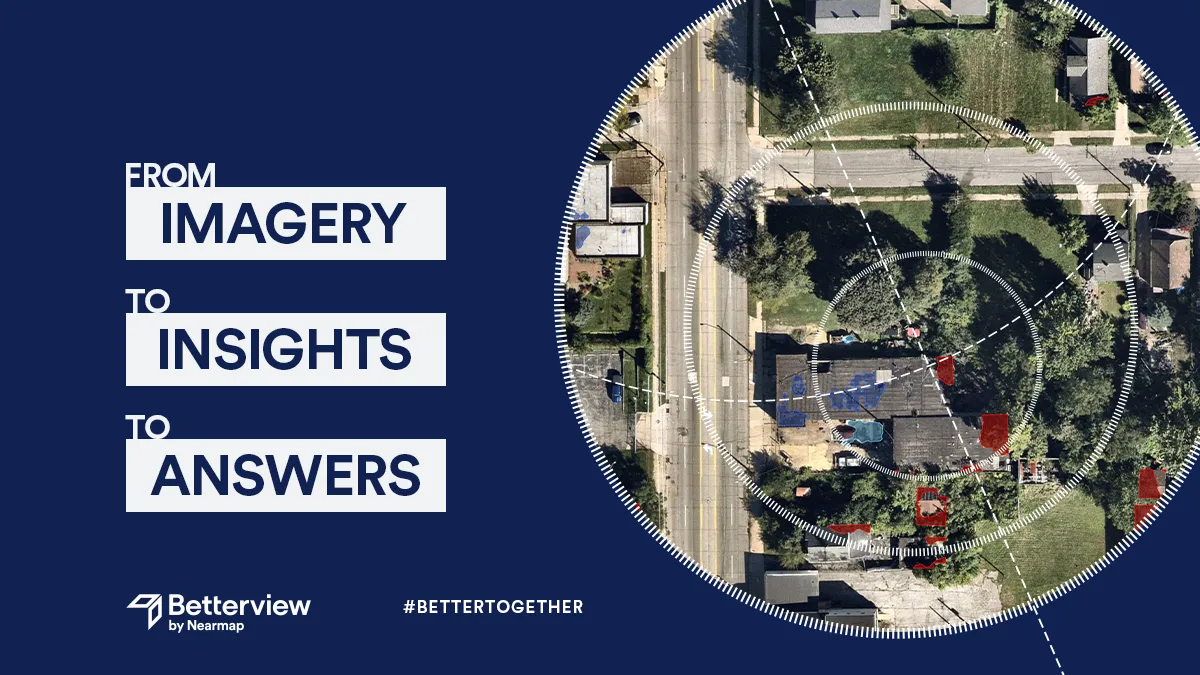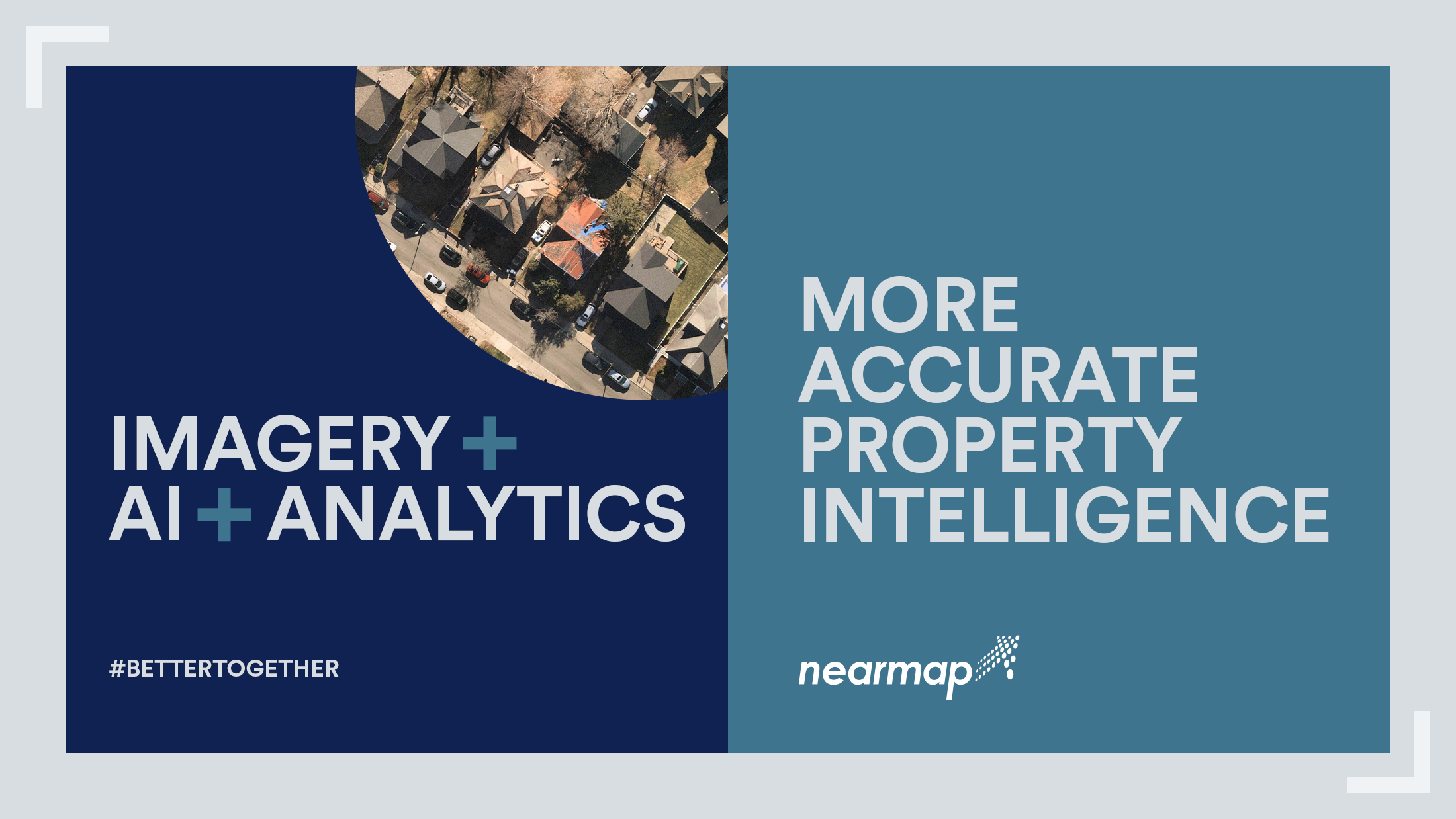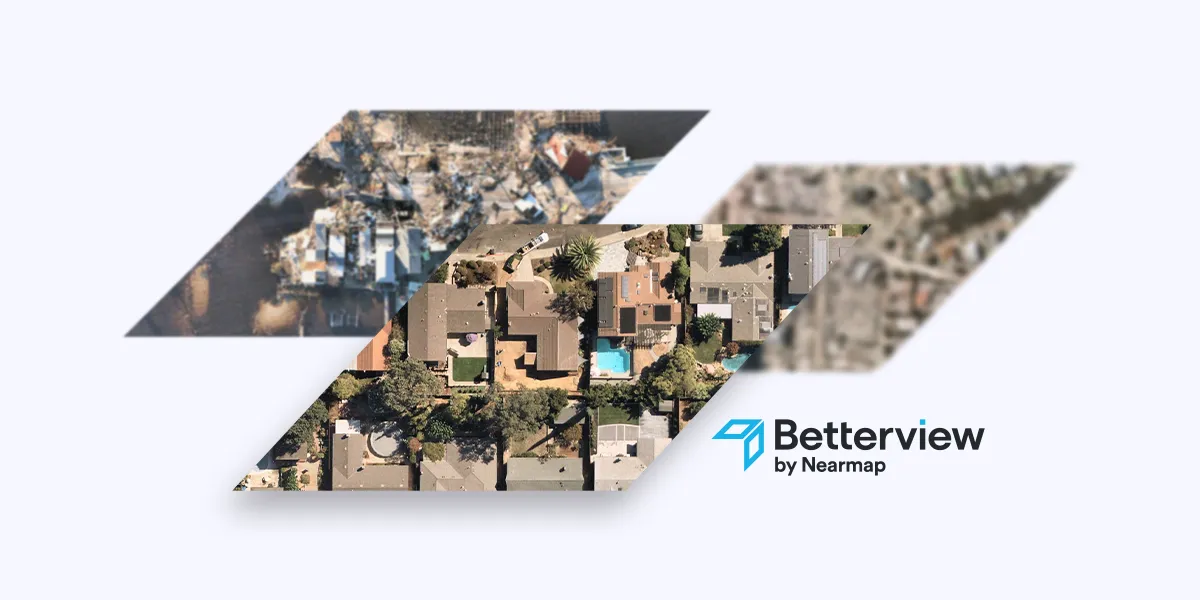From Imagery to Insights to Answers
What does the Nearmap acquisition of Betterview mean for the insurance industry?
3 min read
 Meadow Green
:
Feb 22, 2023 8:00:00 AM
Meadow Green
:
Feb 22, 2023 8:00:00 AM

Here at Betterview we have a motto: automate everything, drill down when needed. This is not to say that human decisionmakers can be entirely removed from the policy lifecycle. But insurance companies benefit from tools that allow them to work smarter, not harder. These tools, which work across all books of property, especially for personal lines, allow insurers to focus their attention on issues that require their expertise rather than wasting valuable time on inessential tasks.
The Betterview Property Intelligence & Risk Management Platform was purposely crafted with the goal of removing inefficiencies from the P&C insurance process. One key tool for this purpose is our customizable flagging system. Flagging accelerates the efficiency of the underwriting and renewal process, enabling insurers to straight-through process solid risks and focus on properties that need the most attention. Additionally, it optimizes efficiency throughout the policy lifecycle, from pricing and quoting, to underwriting and renewal, to even claims.
How does Flagging Work?
To understand flagging, we must first explain the foundation of the platform. The Betterview platform analyzes high-quality aerial imagery with computer vision models to precisely determine property condition and overall risk. To do this, the models spotlight certain key property attributes, also known as detections. We have detections for over 60 attributes, including the presence of solar panels, swimming pools, trampolines, yard debris, roof material, roof staining, missing shingles, and dozens more. In addition to these raw detections, we also have scores – such as our Roof Spotlight Index and our Hail Vulnerability Score – which shed further light on property risk.
Our flagging system relies on these detections and scores but adds in the input of underwriters and other insurance professionals. Underwriters can create individual flags for any detection, score, or combination thereof.
For example, say an insurer is writing in an area with severe risk of wildfire. An underwriter can flag every property with a poor Wildfire Vulnerability Score, and every property located in a region prone to wildfire risk. The properties that meet these requirements can be flagged for a specific action – such as an in-person inspection, a premium adjustment, or a policy cancelation. In this way, underwriters can focus only on the properties at a high risk. This does not just save time, but also resources: if insurers previously sent inspection teams to every property in their book, with flagging, they can dramatically reduce their reliance on these inspections.
Another platform feature that complements flagging is change detections – our ability to monitor changes in property condition over time. Thanks to our inclusion of on-demand and historical imagery, the Betterview platform gives an accurate view of what a property actually looks like right now, not what it looked like at some point in the past. At time of renewal, underwriters can flag properties that experienced significant changes (such as the addition of a secondary structure, or major deterioration of roof quality) and take action based on these changes. Flagging and change detections combined allow insurers to expedite the renewal process without sacrificing accuracy.
Why do you Need Flagging?
One of the main reasons why we built the Betterview platform was to reduce the bottlenecks that insurers experience every day. Chief operations officer and co-founder Dave Tobias, who grew up in the inspections industry, knew firsthand that underwriters needed a reliable way to review property condition without relying solely on physical inspections. Flagging was added to the platform so insurers could save time, money, and IT resources without compromising on their oversight of real property condition.
Flagging can also be used in tandem with PartnerHub – our in-platform marketplace for third-party property data – in order to enable even more efficiencies. Insurers can select from thousands of datapoints from dozens of partners in order to enrich their view of property condition and jumpstart immediate policy actions. For example, an insurer may look at first floor height data from TrueFlood Risk to determine which properties are more vulnerable in a flood zone. By using flagging alongside PartnerHub data, insurers can be confident they are not just performing with maximum efficiency, but with the most comprehensive view of property condition available.
We’ll say it one more time: automate everything, drill down when needed. Betterview is not in the business of replacing experienced insurance professionals. We know that the experience and human ingenuity that these workers bring to the table is invaluable. At the same time, we know their jobs can be made easier, more effective, and more efficient. Flagging is just one of many ways our platform accomplishes this goal.
To learn more about how Betterview can help you optimize efficiency, reduce premium leakage, and predict and prevent losses, schedule a demo today.

What does the Nearmap acquisition of Betterview mean for the insurance industry?

The insurance industry, and the technology that supports it, have seen significant change over the last few years. New technology continues to come...

What are the key trends challenging P&C insurers in 2024?